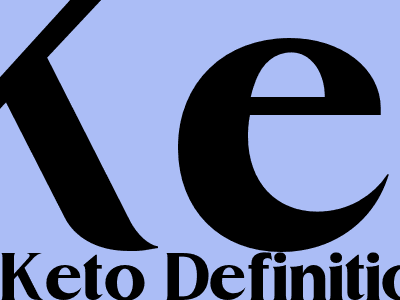The Ultimate Guide to the Ketogenic Diet
What is the Ketogenic Diet?
The ketogenic diet, also known as keto, is a low-carbohydrate, high-fat diet that forces the body to burn fat for fuel instead of glucose. This metabolic state is known as ketosis, and it can lead to significant weight loss and improvements in blood sugar control.
How Does the Ketogenic Diet Work?
The ketogenic diet works by restricting carbohydrate intake to very low levels, typically less than 50 grams per day. This forces the body to deplete its glycogen stores, which are the body's primary source of energy. Once glycogen stores are depleted, the body begins to break down fat into ketones, which can then be used for energy.
Ketones are produced by the liver and are a very efficient source of fuel. They can be used by the brain, heart, and muscles, and they can also help to suppress appetite and increase satiety.
Benefits of the Ketogenic Diet
The ketogenic diet has been shown to have a number of benefits, including:
- Weight loss
- Improved blood sugar control
- Reduced risk of heart disease
- Reduced risk of cancer
- Improved cognitive function
- Reduced inflammation
Risks of the Ketogenic Diet
The ketogenic diet is a very restrictive diet, and it is important to be aware of the potential risks before starting it. These risks include:
- Nutrient deficiencies
- Kidney stones
- Electrolyte imbalances
- Dehydration
- Constipation
Who Should Not Follow the Ketogenic Diet?
The ketogenic diet is not recommended for everyone. It is especially important to avoid the ketogenic diet if you have any of the following conditions:
- Diabetes
- Pancreatitis
- Liver disease
- Kidney disease
- Eating disorders
How to Start the Ketogenic Diet
If you are considering starting the ketogenic diet, it is important to talk to your doctor first. Your doctor can help you determine if the ketogenic diet is right for you and can help you develop a plan to follow the diet safely.
To start the ketogenic diet, you will need to drastically reduce your carbohydrate intake. This means avoiding all sugary foods and drinks, as well as most fruits and vegetables. You will also need to limit your intake of protein, as too much protein can convert to glucose and kick you out of ketosis.
The best way to ensure that you are following the ketogenic diet correctly is to track your macronutrient intake. This means tracking the amount of carbohydrates, protein, and fat you consume each day. There are a number of online tools that can help you with this.
What to Eat on the Ketogenic Diet
The ketogenic diet is based on eating high-fat, low-carbohydrate foods. This includes:
- Meats
- Poultry
- Fish
- Eggs
- Dairy products
- Healthy fats
You should also drink plenty of water and avoid alcohol and sugary drinks.
What to Avoid on the Ketogenic Diet
The ketogenic diet is based on avoiding foods that are high in carbohydrates. This includes:
- Sugary foods and drinks
- Most fruits
- Most vegetables
- Grains
- Legumes
You should also avoid processed foods and foods that are high in vegetable oils.
Ketogenic Diet Sample Meal Plan
Here is a sample meal plan for the ketogenic diet:
- Breakfast: Scrambled eggs with bacon and avocado
- Lunch: Grilled chicken salad with olive oil and vinegar dressing
- Dinner: Salmon with roasted broccoli and cauliflower
- Snacks: Celery sticks with almond butter, hard-boiled eggs
Conclusion
The ketogenic diet is a very restrictive diet, but it can be an effective way to lose weight and improve your health. If you are considering starting the ketogenic diet, it is important to talk to your doctor first and make sure that it is right for you.

Komentar